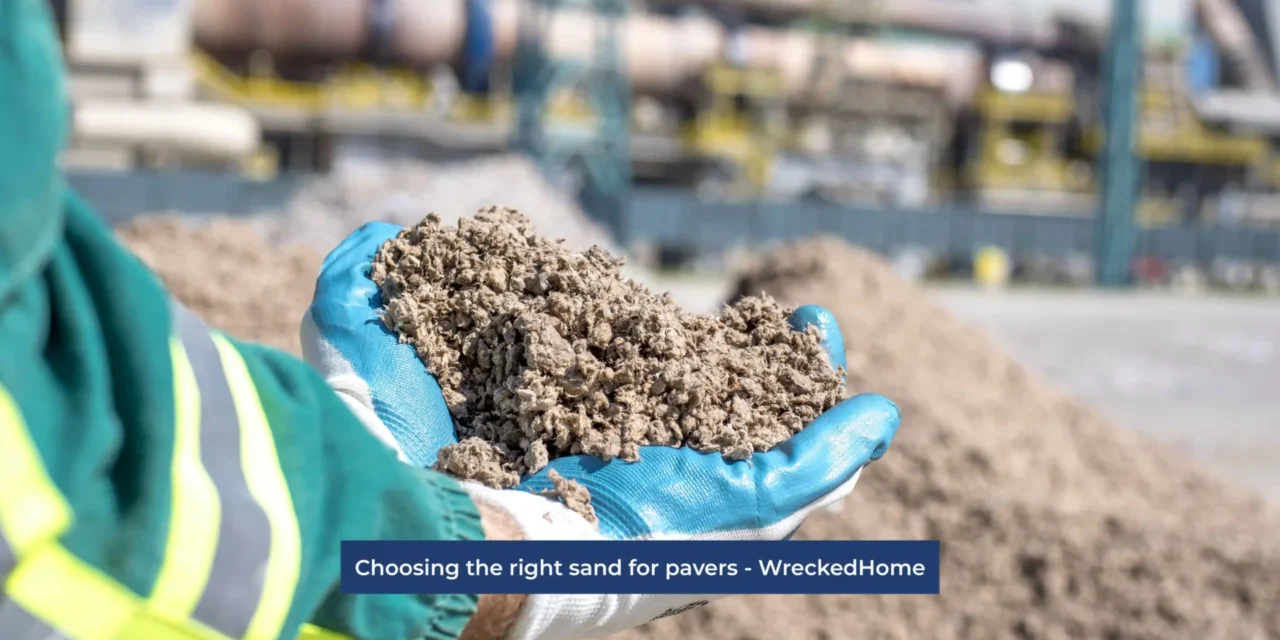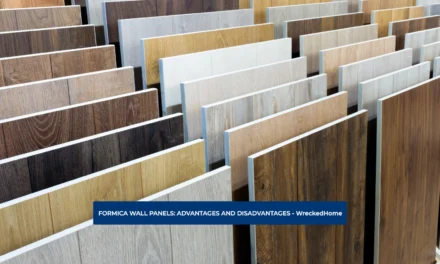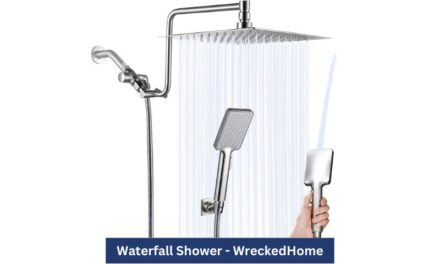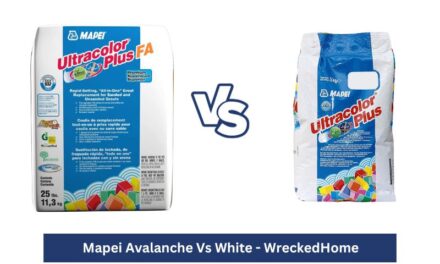Outdoor flooring is necessary when installing walkways and driveways. Most types of outdoor flooring requires pavers. With that in mind, it is important that you know what is required to properly install those pavers. One of the most essential components is sand. However, there are multiple types of paver sand available. Choosing the right sand for pavers is something that must be thoroughly researched before making a decision
The paver surface must be eye catching so that your driveway or walkway is aesthetically pleasing. One of the best ways to make the surface attractive and useful is to use paver sand. It not only gives an amazing final touch, but it is also extremely easy to use.
All pavers require sand. This will ensure that your project remains in good condition and is constructed properly. If you neglect this important element, things can fall apart. The right sand for pavers will usually be coarse-grained.
The particles present in the paver sand are somewhat bigger than the particles in beach sand or playground sand. Therefore, it is specifically designed for paver installations. Choosing the right paver sand is challenging but we have organized this article so that you can be completely informed before making a selection. Before jumping straight into how to make your choice, lets first discuss the function, importance, and type of paver sand.
Functions of Paver Sand (sand for pavers)
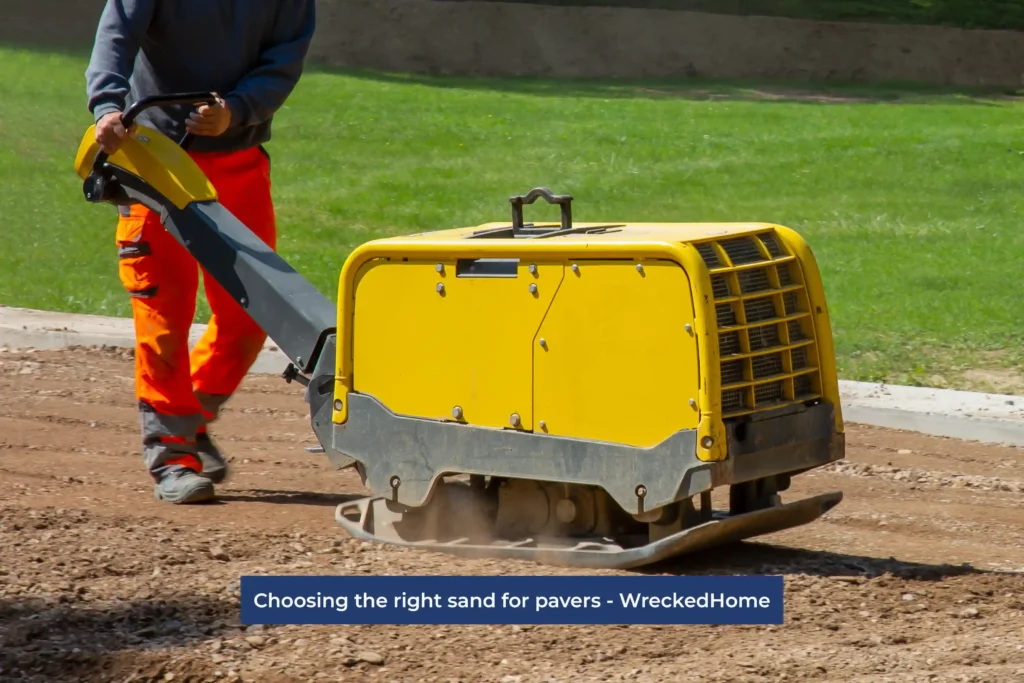
The functions of paver sand are:
Serves as a Base layer
The paver sand functions as a base layer beneath the pavers. The benefit of using it as a base layer is that it can spread evenly on the whole area, and the end result is a smooth and leveled surface. In addition to this, it is responsible for providing stability to the pavers. It does this by ensuring a consistent and level height.
Interlocks Pavers
Pavers require interlocking to function properly. The sand for pavers is responsible for facilitating the interlocking feature that is required for a proper installation. The paver sand is responsible for filling in the joints of the surfaces. It also ensures a smooth and stable final look. This interlocking mechanism is amazing because it prevents the movement of the pavers.
Drains Water
Another amazing function of paver sand is its good drainage feature. It allows the water to drain away through the surface by passing through it. Good drainage extends the life of the paver sand and paved surfaces by not letting water sit on the surface. Standing water is also responsible for the growth of mold and erosion.
Pest control
A clean paved surface is the key to a successful construction of such areas. The paver sand is responsible for this function. It controls pests and weed growth from accumulating in the joints, and thus a neat and pest-free surface appears.
Load distribution
Paver sand ensures flexibility and load distribution by spreading evenly. The flexibility feature is amazing because it prevents any cracks or damage to the surface. Also, no matter how heavy the traffic is or how harsh the weather is, paver sand can handle it all.
Polished look
Paver sand also gives your surface a polished look. When it is installed correctly, it can mesmerize you. It can also be used between gaps, and the final outlook of the project will be a polished clean look. Also, the uniformity of the surface can provide an enhanced overall look that can be very pleasant to the eyes.
Visit our store for 10% off our Tools here.
Types of Paver sand (sand for pavers)
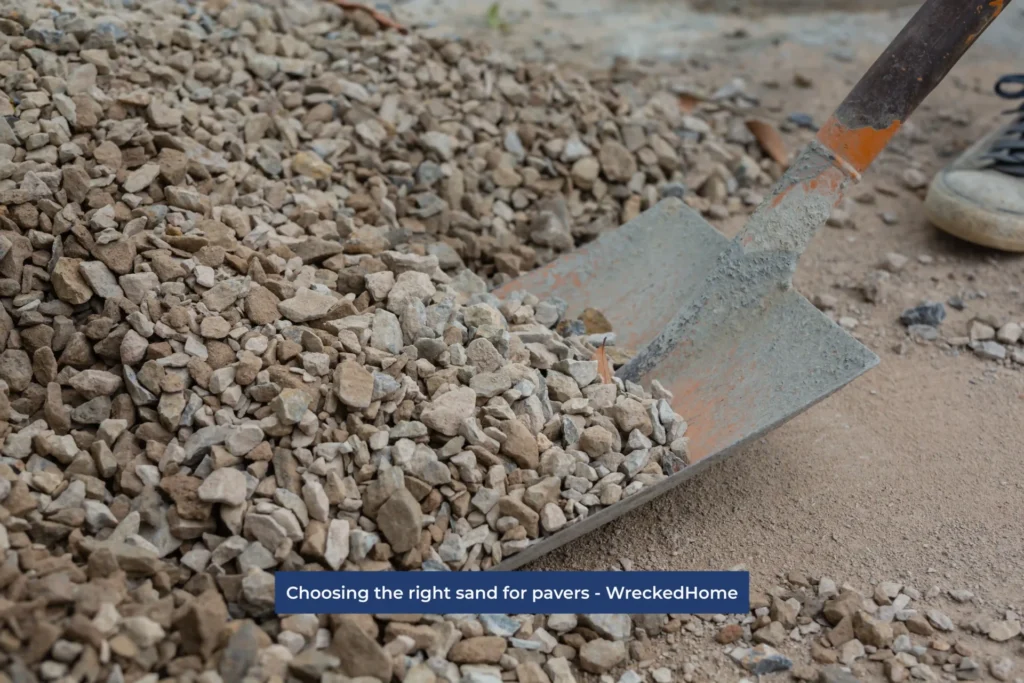
Paver sand comes in different types. The following is a list of all the paver sand types:
Polymeric paver sand
There are multiple types of additives present in paver sand according to its type. The additives in polymeric paver sand get hard when they are exposed to water. This means that this type is perfect for paver joints. High traffic is also be not an issue with polymeric paver sand because it ensures paver joints are tightly sealed. However, polymeric sand is hard to find these days. Read out article on polymeric sand alternatives here.
Joint paver sand
The additives in joint paver sand cannot harden, therefore it is used in traditional paver installations. However, it does not do the best job on interlocking pavers. So you must occasionally replenish it for the best outcomes.
Play paver sand
Play paver sand is a fine and clean type of paver sand. It has additives that work best for aesthetic purposes like children’s play areas. Although this paver sand provides an amazing finish and extended durability it must be regularly maintained. If you desire for the same look years down the road, you must replenish it often.
Now that you have learned about the different paver types, choosing the right paver sand is the next step. The complete guide on choosing the right sand for pavers is below.
Choosing the right sand for pavers
The following are the factors that one must keep in mind for choosing the right sand for pavers:
Particle Size
The size of sand particles has great importance in paver san. If your focus is to ensure good interlocking then it is always better to pick the paver sand that has coarse-grained particles. This is because they get stronger when the water flows over them. Also, they are very important for improving stability.
Material Compatibility
Many people are surprised that paver material has a compatibility definition. Always make sure to choose the paver sand that is most compatible with the type of pavers that will be in your use. Also, there are some pavers that require specific paver sands so it is better to understand the type of pavers you choose. Educate yourself on your paver type and its compatable sand types.
Draining of paver sand
Paver sand comes in multiple types with different drainage factors. This means that the different types of paver sand drain water in different ways. If your main aim is to avoid water pooling then it is very important to select the paver sand that has good drainage characteristics to avoid any damage to your final product.
Weed and pest control
There are types of paver sands that inhibit weed growth without any reason Sometimes this is caused by poor drainage issues. It is important to look for the paver sand that never encourages the production of weeds or pests. Unfortunately, your pavers will never look neat and the maintenance will be hard if weeds and pests grow on the paver joints.
Hardening properties
The hardening properties of paver sand will not only make the final product look amazing and neat, but it also slows down the production of weeds and pests. Therefore, if your focus is an amazingly finished final product that will always be free of weeds and pests then choose a paver sand that has hardening properties.
Color matching
Many believe that color matching was not even possible when it comes to choosing the right sand. However, this is not the case. The paver sand comes in different colors, and it is always better to select the paver sand that compliments the color of your pavers. It will enhance the overall look of your pavers, and it will attract the maximum number of people to your final creation. Overall, this will definitely be a hallmark in your construction.
Easy installation
The paver sand should be easy to install. This means that when you are going to choose the paver sand that sits well with your pavers, make sure that it is easy to install. There are some kinds of paver sands that are difficult to work with due to the type of grains. Therefore, it is crucial to always pick the paver sand that distributes easily and evenly.
Durable finish
The durability of paver sand differs when it comes to the type of paver sand. If your focus is on the durability of your paver sand then always go for the one that sits well with the weather conditions in your area. Also, the amount of traffic that will go through those pavers with paver sand in between will be the main reason to choose a paver sand that is durable enough to bear the weight.
Therefore, choosing the right sand for pavers is a must in every condition. In addition to the durable finish of the floor, the covered patios attached to the house can add an equally pleasing look to the house. You can click here for more details.
Cost and availability
Your budget will always be your major concern when it comes to the buying of paver sand. After determining the local weather conditions, color, traffic quantity, and other such factors make sure to pick the sand that is also suitable according to your budget. Keep in mind that different weather demands and local preferences have a significant impact on the availability of the paver sand. Make sure the sand that you want is available in your area before conducting cost analyses.
Climate factors
The climate has a major impact on every single factor that you are considering for construction purposes. This means that before choosing the type of paver sand, make sure that it fits perfectly according to the climate of your region. Poor draining of soil can lead to pests and weeds in areas where weather is harsh.
Maintenance
Like all the other factors, choosing the right sand for pavers is only one concern. It must be maintained carefully in order to ensure its durability and amazing look. The type of paver sand you choose will define how often it needs maintenance. So, before buying, it is best to look at the user manual for its maintenance. Check out Our Leaf Blower to remove debris from your pavers.
We can conclude by saying that paver sand is a very important component in the construction of pavers. With that in mind, choosing the right sand for pavers is crucial because it it ensures durability and overall cohesion.
For any repairs, installations, builds, or questions; We recommend you to hire a professional. Find A Pro Near You Here!

